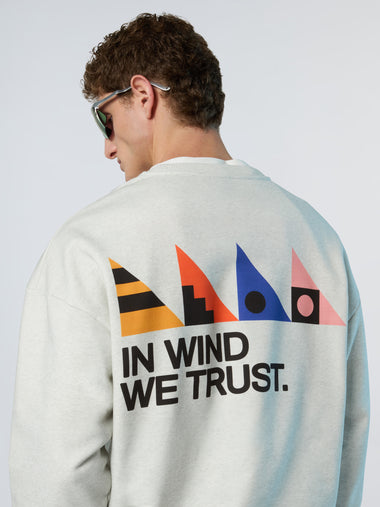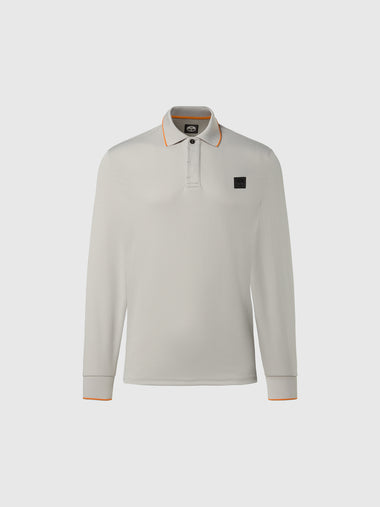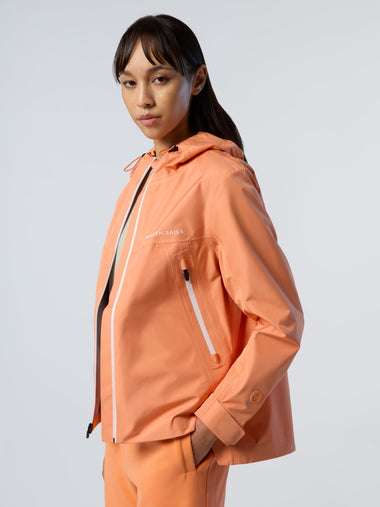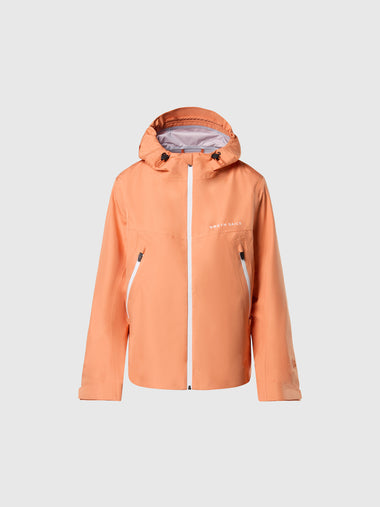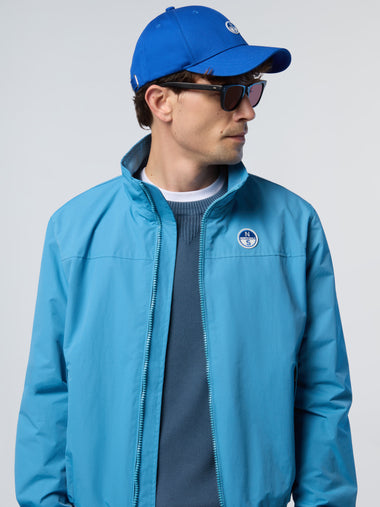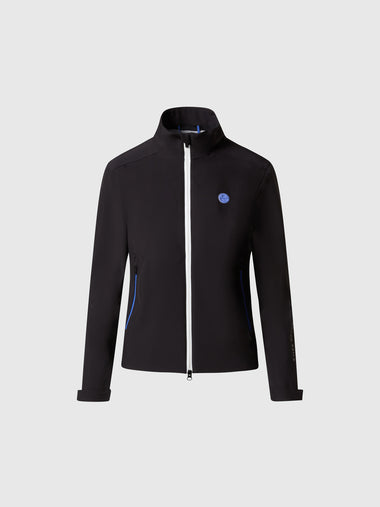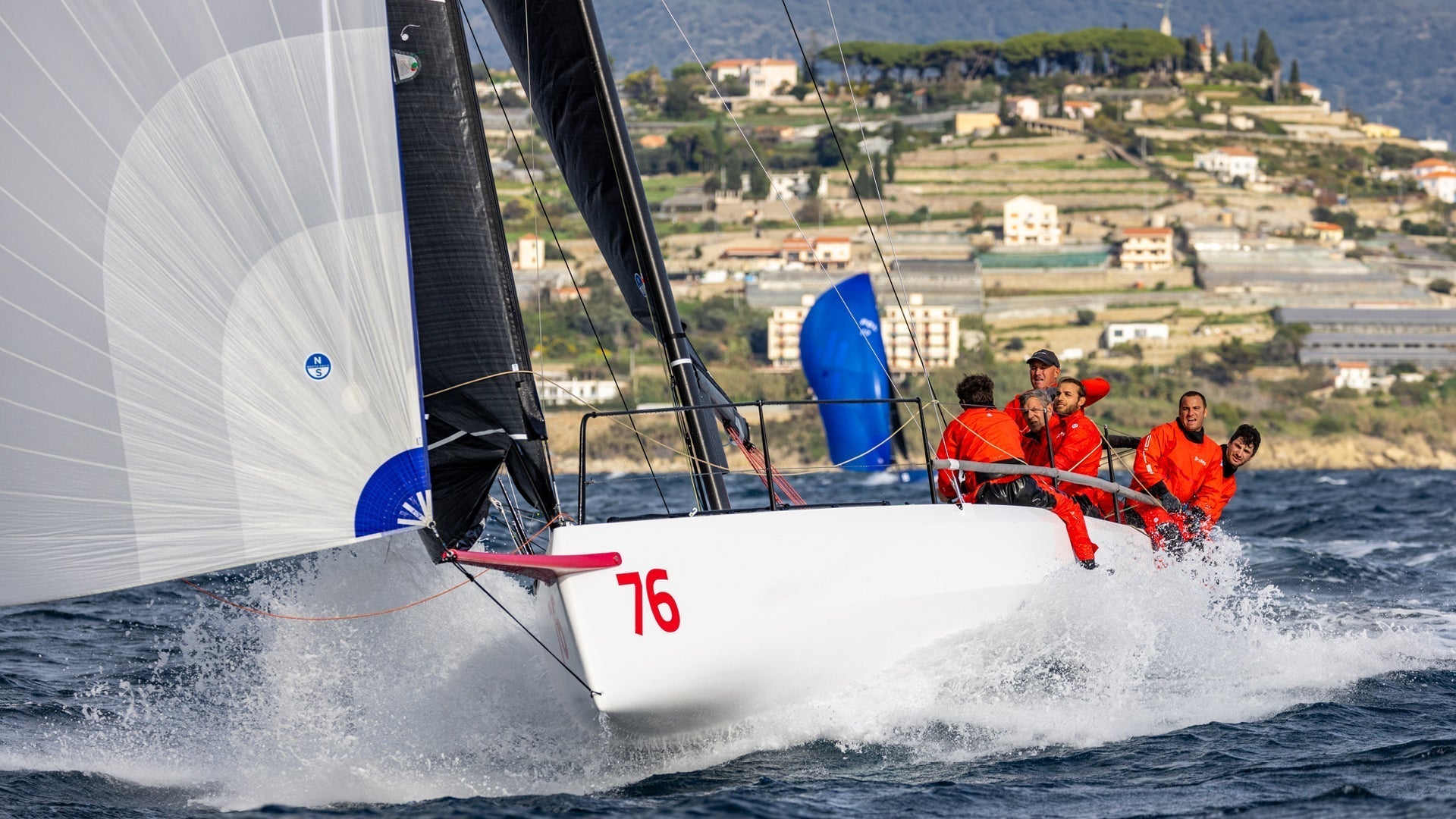REFLECTING ON AN ACTION-PACKED YEAR
2024 has been a massive year for sailing, with many giant leaps forward in many different aspects of the sport. And it has been a significant year for North Sails.
It’s hard to recall such an action-packed season of Grand Prix sailing as we’ve seen in 2024. There was a buzz in the air at November’s industry get-together, METSTRADE, the enormous marine trade show that takes place every year in Amsterdam. Alongside METSTRADE, the Yacht Racing Forum hosted a who’s-who of influential people gathered to help shape the future of our sport. North Sails had a strong presence, with General Manager of North Sails UK, Ian Walker discussing the future of the Olympic Regatta, along with Sales Expert Hugues Destremau who presented the latest updates from the French offshore scene.
FOUR PINNACLES OF THE SEASON
Across the 2024 Grand Prix racing season there were four major pinnacles, starting offshore with the Arkea Ultim Challenge - Brest in January and February, then moving on to the Paris Games in July and August, swiftly followed by the 37th America’s Cup in Barcelona and then heading back offshore towards the end of the year with the departure of the legendary Vendée Globe race in November.
While all these events represent different aspects of our hugely diverse sport, North 3Di technology provided the power for all of them. All six of the 32-metre trimarans that foiled around the planet in the Arkea Ultim Challenge world relied on 3Di sails. In the Olympic Regatta, both the men’s 49er and women’s 49erFX skiff fleets were universally equipped with 3Di mainsails and jibs.
All six of the AC75s in the 37th America’s Cup were foiling at speeds close to or sometimes in excess of 50 knots, each of them propelled by the latest developments in 3Di technology. And when the 40-strong fleet departed Les Sables d’Olonnes for the start of the Vendée Globe, half of the IMOCAs set sail around the world with a 3Di onboard.

IMOCA VERSATILITY
Hugues Destremau was at METSTRADE and the Yacht Racing Forum to update the industry with the latest North Sails developments in IMOCA sails and the particular challenges of building such a demanding sail wardrobe. “With just eight sails permitted on board an IMOCA, and only seven for the 2028 edition of the Vendée Globe, there’s more and more need for versatility, and 3Di technology provides just that,” says Destremau.
“Since the new era of foiling, the boats can average 25 knots and can be foiling upwind at 19 knots.” That’s hard on the sailors and hard on the equipment. “The IMOCA skippers tell us the boats are easy to fly but it’s difficult to maintain stable flight, so the teams asked us to reduce the luff length of the sails because it’s pretty much impossible to keep the IMOCA flying nicely for long periods when the sails are at full hoist. By reducing luff length, we reduce the leech length, which means the sails hold a better leech shape, and the boat maintains higher average speeds.”
NORTH 3Di IN ALL CORNERS OF THE SPORT
Whether you’re talking inshore or offshore, big boat or small, it’s clear that North 3Di is vital building block for high-end, championship projects. To the sailing world, 3Di is a top tier range of products. But to the North Sails design team, 3Di is much more than a product range. It is a vast menu of materials with different properties, coupled with a zero-Mylar manufacturing process that allows the flexibility needed to customize sails to precisely fit the specific requirements of any type of sailing.
As ever, the America’s Cup plays a vital part in driving forward the big innovations that eventually trickle down into the wider sailing world. With all six teams in Barcelona relying on North Sails to design and build their wardrobe to their own specifications, confidentiality is absolutely key, as Per Andersson, North Sails 3D General Manager, explains. “Every America’s Cup team design that comes in, is basically in the ‘lockbox’. No one can just go in and look at those designs. It’s the same for IMOCA, superyachts, whatever the project. Our clients rely on us to keep everything top secret if that is their priority.”
North Sails continues to lead the way in 3D sailmaking. “3D sailmaking is here to stay for us,” says Andersson. “No one else is molding sails the way we're doing it. The North Sails way is superior. I think the next revolutionary step in the process is going to be a new material or a new way to use materials that we may not know about yet.”
RENEW - A BREAKTHROUGH IN BUILDING MORE SUSTAINABLE SAILS
The common theme across all North Sails products is that they are all geared to delivering the best possible performance. But raw speed is not the only measure of performance. The start of 2024 marked a milestone for North Sails as it seeks to attain the highest levels of performance in terms of sustainability, while minimizing environmental impact.
It has been a four-year mission to create a more environmentally sustainable sailcloth - launched earlier this year as NPL RENEW. For Tom Davis, Head of North Advanced Textiles, the moment when he discovered that RENEW had won a DAME Award at METSTRADE for most innovative product was a special one. “I happened to be at our North Panel Laminate facility in Sri Lanka at the time of the DAME Award announcement. We have a big team of people there, and it was super exciting for me to be with the team that had physically produced this new material. We had a get-together with 60 or so of our employees in the laminating plant and we had a little celebration.”
RENEW is made up of a combination of bio-based and recycled raw materials that are assembled in Sri Lanka into the finished cloth for cruising. “We take the raw materials and weave them together in various combinations to create a roll of sail cloth,” Davis explains. “Then we cut that cloth into panels and shape it into a sail and finish as we do for all new North sails. In the case of the yarn and the woven polyester taffeta and the film, all of those have started life as a discarded beverage bottle, a water bottle or a soda bottle. Our partner suppliers take those and convert them back to the monomers and the polymers to create the new yarn or the new film.”
While it’s not yet possible to take an old sail, put it back into the recycling process and rebuild another new sail from the same materials, Davis says that is the ultimate goal. He believes that achieving that next level of recycling process is only a matter of time and more painstaking R&D work. “That’s certainly the goal, but we’re really pleased with where we’ve got to so far with RENEW.”
Approximately 90 per cent of the raw materials in RENEW come from sustainable sources, and the first iteration of the material is suitable for cruising boats up to 45ft long. Finding a resin from renewable sources is one of the next targets, at which point it might become possible to create a 100 per cent renewable sail.
AEROTECH - FOR STRONGER, STABLER ASYMMETRICS
While North Sails is best known for its presence in the traditional sailing market, the company has always taken great interest in every type of wind-powered vessel. Over the past 20 years kiteboarding has grown enormously and in the past five years wing foiling has become the massive growth beach sport. Funnily enough it’s these beach sports that have helped generate the biggest breakthrough in spinnaker sailcloth for the past 15 years or more, according to Tom Davis.
“We’ve been working closely with a French based textile company who have a strong background in making these high performance, lightweight nylon and polyester materials. The company we work with is the leader in parachutes for paragliding and ultra-light aircraft. This company spent a lot of time working to make sure that they have materials that have excellent shape holding, very tough and strong and not susceptible to breaking. It’s one thing for a spinnaker to break, but quite another if a parachute fails.”
Previous forms of polyester were stable for shape-holding but tended to break without warning. From all the rapid developments in kiteboarding and wing foiling, a new variety of polyester has emerged. This new polyester cloth - AEROTECH P - is much more robust and has been producing excellent results on several race circuits including Maxis, TP52s, RC44s, Cape 31s, and several dinghy and skiff classes.
With precision weaving, as well as exceptionally durable resin impregnation and coating, the nylon version - AEROTECH N - also moves the game forward for wider-angle asymmetric spinnakers as well as traditional downwind symmetrical spinnakers.
SUPERYACHT DEVELOPMENTS
MATCHING AESTHETICS WITH 3Di PERFORMANCE
Quinny Houry, Director of North Sails Palma, has been working hard with his team to meet the request from a number of superyacht owners who have been looking to bring a more traditional white-sail aesthetic to their performance 3Di sails. “Up until now our ‘white sails’ were actually light grey because of the carbon and aramid in the sails,” says Houry. “So we’ve spent a lot of energy moving the carbon and aramid into the middle of the composite and using polyester and PE [polyethylene] on the outside so there’s less color show-through from the black. We introduced a new form of PE which is an Ultra PE/ spectra blend. We moved those to the outer surfaces of the composite and then polyester, chafe-resistant surfaces on the outside with titanium oxide.”
The technical challenge came in achieving the right blend of Ultra PE and polyester. “Polyester is a very stable material,” says Houry. “It’s very elastic but very stable in compression. So we used a blend of polyester and polyethylene to control any shrinkage in the layer that then goes underneath the polyester layer.” Some of the early adopters have been the Andre Hoek 163ft luxury ketch, Meraki, and the 265ft Royal Huisman yacht, Sea Eagle. “You put the new sails on the boat and already it has a fresh look about it,” says Houry. “The feedback has been very good so far.”
NON-LASHING BATTEN SYSTEM
Tensioning battens into their batten pockets has tended to be a bit hit-and-miss affair, but a new system developed with C-Tech in New Zealand makes it possible to achieve much more accurate tensions on superyacht sails now. “Tensioning battens with a piece of Ultra PE lashing has been a bit industrial,” says Houry. “But for the 36th America’s Cup in New Zealand, C-Tech developed a batten end with an Allen key that enables you to preset the correct tension. In the old days, it was down to the accuracy of the ‘eye-ometer’, Houry laughs. “It was down to how skilled the deckhand was who was pushing the battens in. But if he got it wrong, you’d have to drop the sail to reset the tension and rehoist. With this new system we can give the correct tension numbers to the crew and they can set them before they hoist the sail. And it also gets rid of those lashings, the webbings, rings, shackles and all kind of paraphernalia that could chafe on the boom, which ends up creating a service point. In terms of performance, it makes it much easier to get the battens and curvature of the sail to the way the designers want it to look.”
KEN READ SUMS IT UP
2024 has been a huge year for sailing, with many giant leaps forward in many different aspects of the sport. And it has been a significant year for North Sails. President of North Sails and North Technology Group, Ken Read, sums it up: “North Sails continues to be the industry leader because of our team’s passion for never-ending product development. It’s not simply about making boats go faster, although that’s certainly a big part of our DNA. High performance is defined in many different ways - whether it’s speed, reliability, repeatability, sustainability. The common theme is that North Sails innovates in every area, finding creative solutions to challenging problems. We’re proud of our team’s achievements over the past 12 months and we’re looking forward to more breakthroughs and milestones in 2025.”




